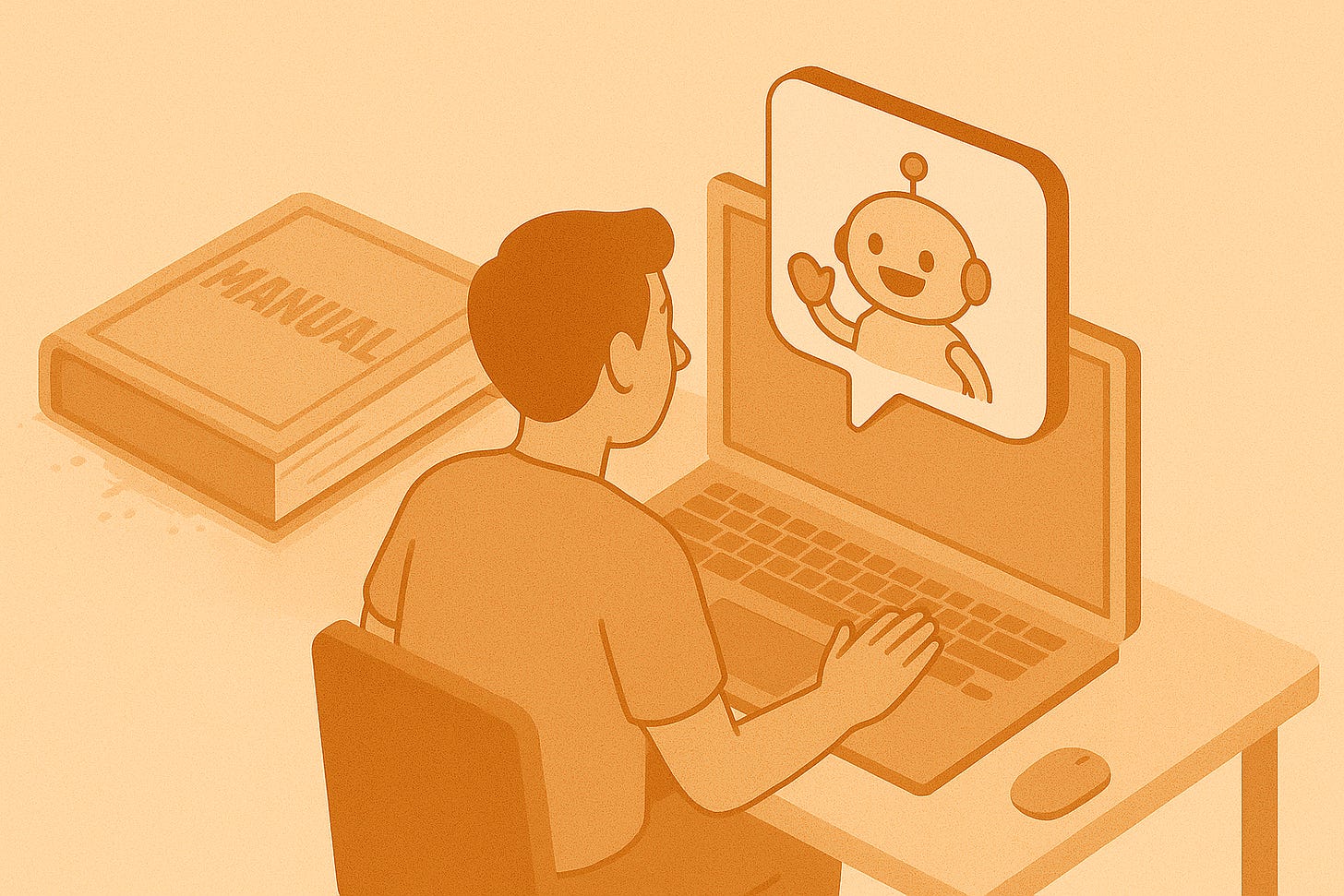Why Your Users Aren’t Reading Your Product Docs – And What to Do Instead
Writing detailed product documentation is one thing, but getting people to actually read it is another challenge altogether. If you’ve spent countless hours crafting guides and FAQs on your website only to find that users still seem clueless or keep asking questions, you’re not alone. Studies show that most users don’t read manuals or product docs in full – in fact, one study found people read them only 25% of the time! Even when they do open a documentation page, they’re likely to skim; on an average web page, users read at most about 28% of the words (20% is more likely). Clearly, there’s a disconnect between the content we post and what users actually consume.
So why aren’t your users reading the content you worked so hard on? And more importantly, what can you do instead to ensure they still get the help they need? Let’s explore the common reasons and some effective solutions.
The Problem: People Don’t Want to Read Websites or Documents Like Books
Your website might be rich in information, but visitors rarely treat it like a manual. They skim, they scroll, and if they don’t find what they need fast enough, they bounce.
Understanding why users avoid reading your docs is the first step. Here are the main reasons that prevent readers from diving into (or finishing) product documentation:
It’s Too Long and Hard to Navigate
One big reason users abandon documentation is that it’s just too much work to read. If your docs are lengthy walls of text or organized in a confusing way, users will feel overwhelmed. Web usability research shows that 79% of people scan webpages for the info they need, while only 16% read word-by-word. In other words, if your documentation isn’t scannable and user-friendly, most visitors will gloss over it instead of absorbing every detail.
Even those who attempt to read the manual often end up frustrated. Research found that many product manuals have unclear structure and confusing terminology, making it difficult for users to find what they’re looking for. The content might be comprehensive, but if it’s not organized around actual user questions or tasks, it can feel like searching for a needle in a haystack.
Users Want Instant Answers (Impatience Rules)
Another factor is impatience. In today’s fast-paced digital world, people expect to get answers quickly and with minimal effort. Many users would rather jump right into using a product and figure things out as they go, instead of reading about it first. A study observed that most people skip the manual and go straight to using the application without reading instructions. This “trial-and-error” approach feels more natural to users than sitting down to study documentation upfront.
Why? Simply put, life’s too short to read a 50-page manual for every new tool. Users typically consult documentation only when they’re really stuck or need something specific, and even then they want to grab the answer and get back to work. If they do open your docs, they are likely hunting for a particular solution and will forget the details immediately after they fix their issue.
Moreover, people gravitate towards whichever information source is easiest. An empirical study found that, in general, software users have a preference for sources that take little effort to access. Reading a long guide cover-to-cover is high effort; doing a quick Google search or clicking a few buttons is low effort. It’s no surprise that when faced with a problem, users often try fast alternatives – typing a question into Google, watching a short YouTube tutorial, or asking a colleague – rather than poring over official documentation. They want instant answers, not a reading assignment.
Help Isn’t Accessible at the Right Time
Even when users are willing to consult documentation, it might not be accessible at their moment of need. Often product docs live in a separate place – a different webpage, a PDF manual, or a help site – removed from where the user is experiencing the problem. This means the user has to stop what they’re doing, navigate away to find the doc, and then try to apply the info back to their task. That context switching is cumbersome.
If the documentation isn’t embedded into the user’s workflow, many won’t bother seeking it out. Imagine using a software application and hitting a snag – if the help content isn’t right there inside the app (or a click away), the user might just muddle through or give up, rather than opening a big manual. Online manuals and FAQs are often extremely long, and structured as a random list of Q&A, which makes it very difficult to quickly find the needed information. The specific detail a user needs could be hidden in a massive FAQ page, and that’s assuming they even know the page exists.
The end result is that your carefully written documentation goes unread simply because it’s not there at the critical moment when the user has a question.
In short - people do not read documents because:
They’re busy. Time is limited, attention spans are shorter.
They’re task-oriented. Visitors come with a goal in mind, not curiosity.
They’re used to instant answers. Search engines, voice assistants, and AI tools have trained people to expect results in seconds.
If someone lands on your site and has to dig through five sections to find whether your product integrates with Zoom or what your refund policy is, there’s a good chance they’ll just leave.
The Shift: From Reading to Asking
Instead of reading, users now prefer asking. Think about how you use apps or services yourself. If there’s a support chat button, chances are you click that instead of searching for the answer in some help page.
The same is true for your visitors. When they arrive, they want:
A way to ask specific questions without hunting through menus
A fast, no-friction way to get an answer
The feeling that they are "interacting," not studying
Enter: AI chat assistants like WebsiteChat.
With WebsiteChat, your visitors don’t need to read long paragraphs or open new tabs to find answers. They can simply type a question into the chat widget and get an instant response – powered by the very content already present on your website.
It’s not that your content isn’t valuable. It’s just that most users prefer accessing it in a different format.
What They Expect: Instant, Contextual Help
When someone visits your website, they’re often mid-task: researching, comparing, checking pricing, or looking for a feature match. If you make them read too much or click too many things, you're adding resistance.
Modern users want:
A quick way to ask, "Does this work with Shopify?"
A response right there, without digging
Help that feels like a conversation, not a lecture
That’s why conversational interfaces work so well. You can guide users, answer specifics, and even collect leads naturally – all while reducing cognitive load.
Yes, Content Still Matters (But How You Deliver It Matters More)
To be clear: we’re not saying you should remove helpful content from your website. But expecting users to read through all of it before acting? That’s outdated.
Instead, repurpose that content into:
A knowledge base the AI chat assistant can pull from
Bite-sized responses to common questions
Guided flows that help users reach a decision fast
Even subtle tweaks like breaking up text, adding proper descriptions, or linking key questions to the chatbot can help.
Final Thought: Meet Users Where They Are
Your website’s content is powerful. But only if users actually engage with it. And today, engagement means conversation.
Chat-first support helps users interact with your existing content, without reading it line-by-line. It’s faster for them, and more effective for you.
It’s not that users don’t care about what you offer. They just want the answer now, without the homework. Instead of pushing users to "read more," give them a way to simply ask.
WebsiteChat might be the solution you need—turn passive readers into engaged conversations. Start your 15-day free trial at https://websitechat.in/ (No credit card required!)


